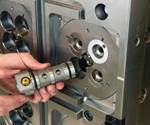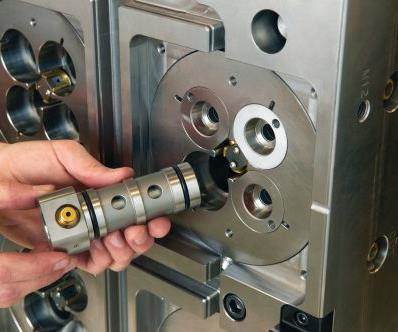In the Trenches: Who is ROI Anyway?
Making the argument for bringing polishing and repair work in-house.
New technology, tools, machines, equipment and training have the potential to improve your day-to-day operations and should be studied, understood and implemented whenever possible. The problem is they all come at a cost and often represent a significant investment.
At home, when your spouse wants a new dishwasher, you determine how much you can afford and go buy one that matches the other appliances. When you need a new car, you may give it a little more thought than an appliance, but most people figure out what they can afford and what they like, and then do a little research to confirm the wisdom of their decision, hoping to make the best deal possible.
Obtaining the necessary resources to invest in new equipment or training for the workplace is not as easy. There are other people who need to be convinced that what you claim is a need actu-ally has some provable validity. At home, your desires, convenience or status may be the only things that need to be assuaged. In business, the bottom line needs to be potentially
impacted in a positive manner to untie the purse strings.
In business, ROI is the acronym that stands for “What’s in it for me?” (actually, “return on investment”). When I was new to shop management, providing justification for purchases seemed a difficult task, but, in reality, it is not. All that is needed is a little data, some reasonable discussions and a good track record. Following are three instances where making the argument to bring work in-house proved successful.
Polishing
One of my early goals was to reduce the number of repairs sent out and the attendant costs associated with outsourcing. Although I don’t recall keeping records on our outsourcing part of a larger plan, I intuitively knew that it would cost the plant less if we could accomplish more repair work in-house.
In the first two years, we sent a total of 52 jobs out for polish repair at a cost of about $26,000. I pushed the limits a little, took some calculated risks, expressed confidence in staff skills, and in the next two years we reduced outsourced polishing by 63 percent. That was a $20,000 reduction in the amount of money spent during the previous two years.
In the process, I obtained a pretty good understanding of our skill levels and began to make the case for polishing training. I recorded relevant data, explained our skills deficiencies, assigned a percentage to the number of repair workorders that entailed polishing and made a reasonable case that improving our polishing skills would continue to reduce our outsourcing for this type of work.
What seemed to be a significant sum for training was fairly simple to get approved, and as predicted, the benefits showed immediately: improved turnaround time, better quality in polish work, and reduced headaches and heartburn (for me).
Fixing Leaks
When hydraulic leaks occurred in our valve-gated hot runner manifold systems, we always relied on a local auto parts store to quickly get hoses made. I realized I was running to town to get a hose made too often, so to avoid the scramble, I settled on four average-length hoses that would work for most of our repairs, had them made and stocked them in our toolroom.
This worked well for a while until we had some major changes in the type of hot runner systems we were getting with our new tools. Hydraulic leak occurrences increased, so I went back into scramble mode. This time, when I approached management about investing in equipment to crimp hydraulic hoses in-house, I got the go-ahead to present the ROI. The maintenance manager revealed that his department would also benefit from fabricating hoses in-house, making the ROI argument a no-brainer. I found a supplier that volunteered to place the equipment in our facility and conduct training. Talk about a win/win.
Micro-Welding
I had been discussing micro-welding for a while to plant the seed for this new technology. Every time we needed to send something out for micro-welding, I would throw in a, “You know, if we had a micro-welder in-house …” argument. While researching the technology, I attended Amerimold to see the technology up close, visited relevant vendors and read as much as I could. All along, I kept management informed about my findings, including the money spent on micro-weld repairs and engineering changes, rough shipping estimates, and the approximate payback timeline. I could have also included estimated cost savings from reduced scrap and downtime.
We’ve had our plasma welder for a few months now and have already eliminated flash on several tools. This has reduced scrap and hours at the press for trimming. Additionally, we have taken on a number of engineering changes that were previously sent out. I predicted a two-year ROI, and at the current rate it will be less than a year.
The next request on tap is some in-house welding training to improve our skills to the level of the technology we possess. I expect that will be an easy sell as well.
Related Content
Think Safety: Eliminate Hazards Throughout the Shop
The tooling community is taking advantage of new products for safer mold shops and molding facilities.
Read MoreThe Ins and Outs of Hot Runner Temperature Control
A training checklist that explains the why and how of proper hot runner temperature control and system management.
Read More5 Hot Runner Tips for Moldmakers and Molders
Best practices for initial hot runner tryouts and effective preventive maintenance.
Read MoreHow to Use Scientific Maintenance for More Accurate Mold and Part Troubleshooting
Discover how adopting scientific maintenance approaches helps improve mold lifespan, minimize failures, and optimize production outcomes.
Read MoreRead Next
In the Trenches: Mold Repair
In this multi-part series of articles, contributer James Bourne, a tool repair supervisor and freelance writer, shares his own personal struggles in the business, as well as lessons learned and tricks of the trade garnered along the way.
Read MoreAre You a Moldmaker Considering 3D Printing? Consider the 3D Printing Workshop at NPE2024
Presentations will cover 3D printing for mold tooling, material innovation, product development, bridge production and full-scale, high-volume additive manufacturing.
Read MoreHow to Use Strategic Planning Tools, Data to Manage the Human Side of Business
Q&A with Marion Wells, MMT EAB member and founder of Human Asset Management.
Read More




















